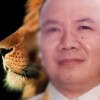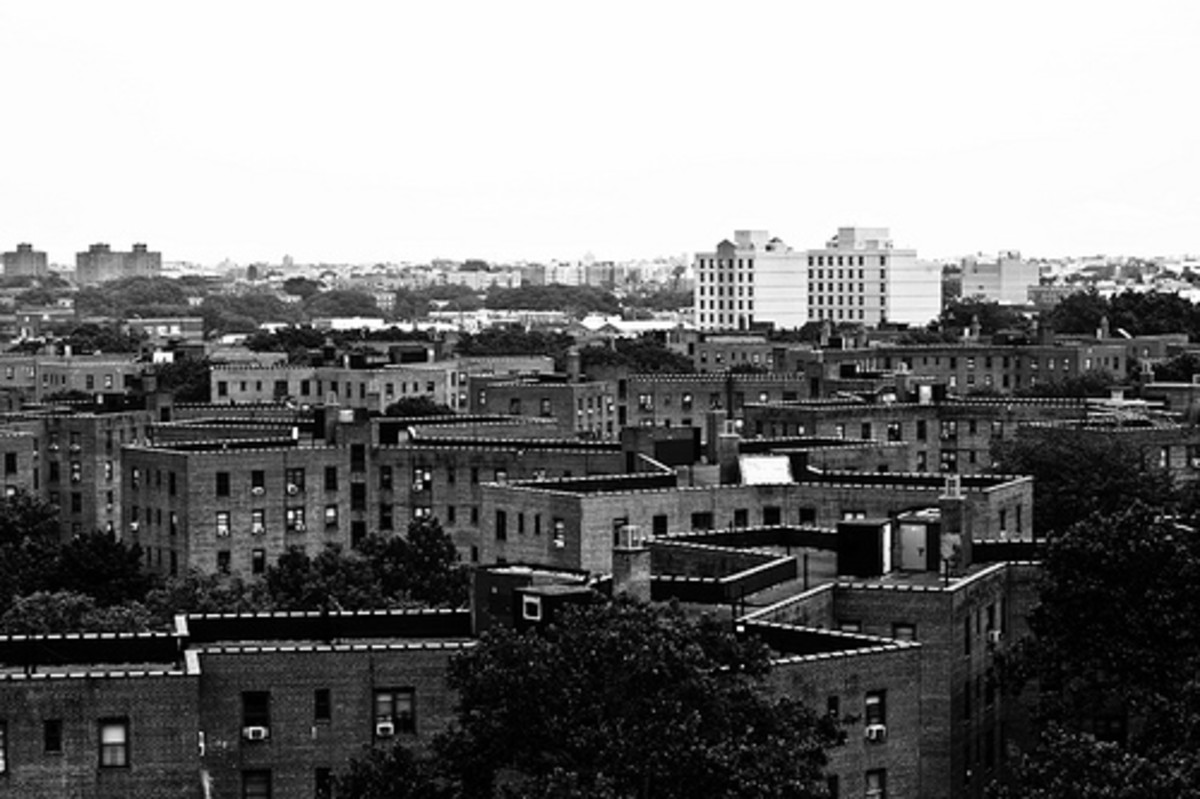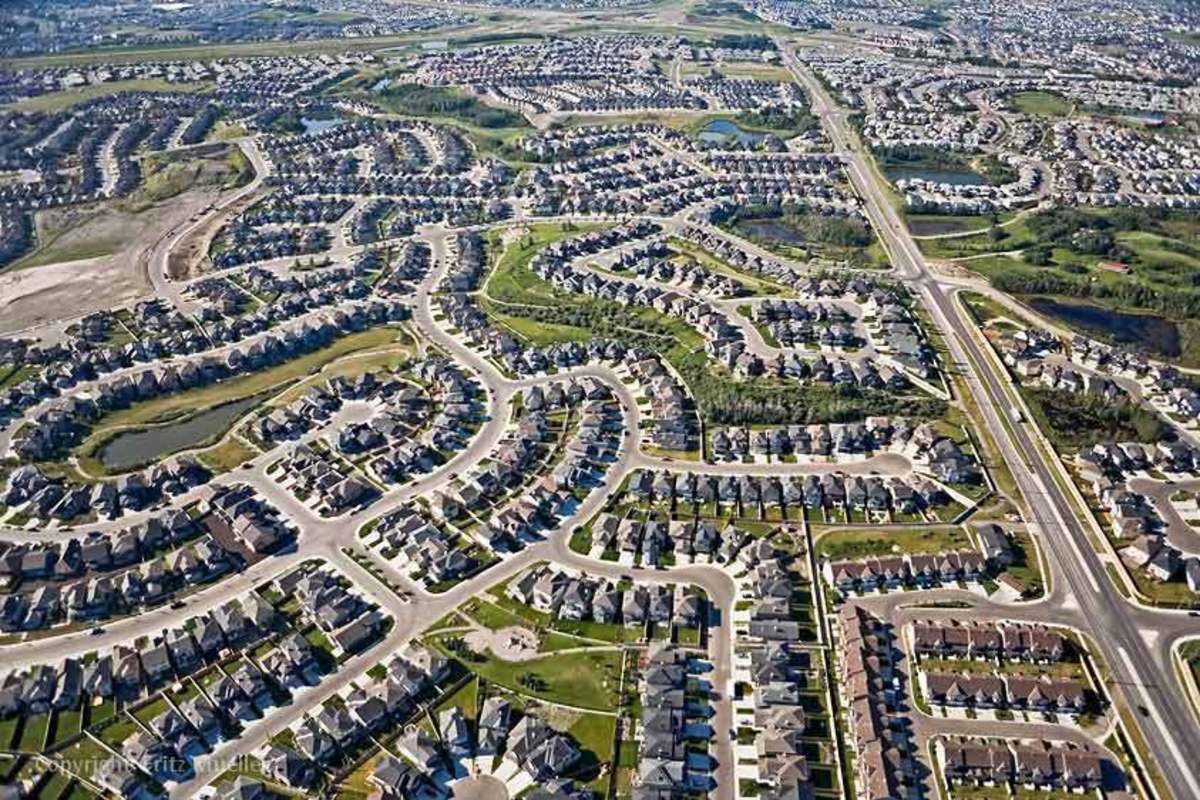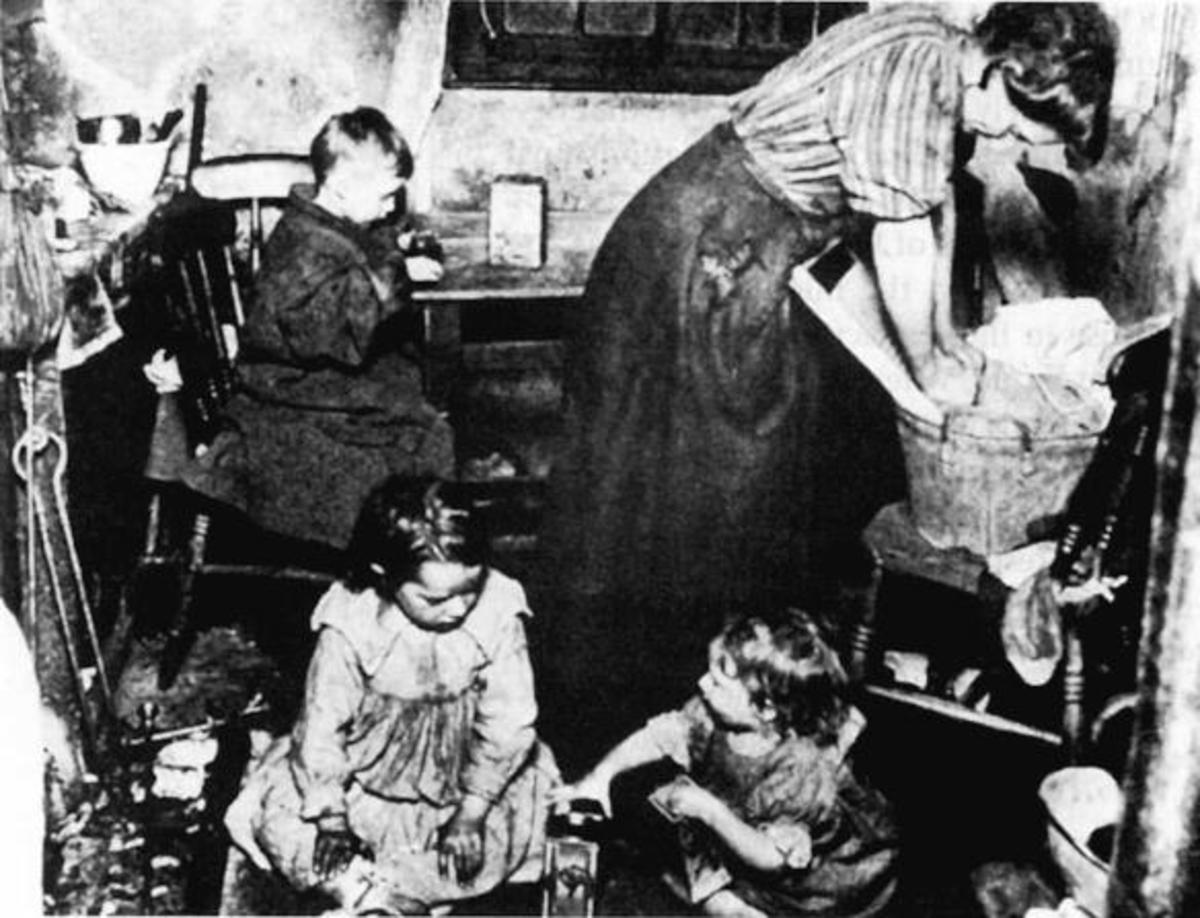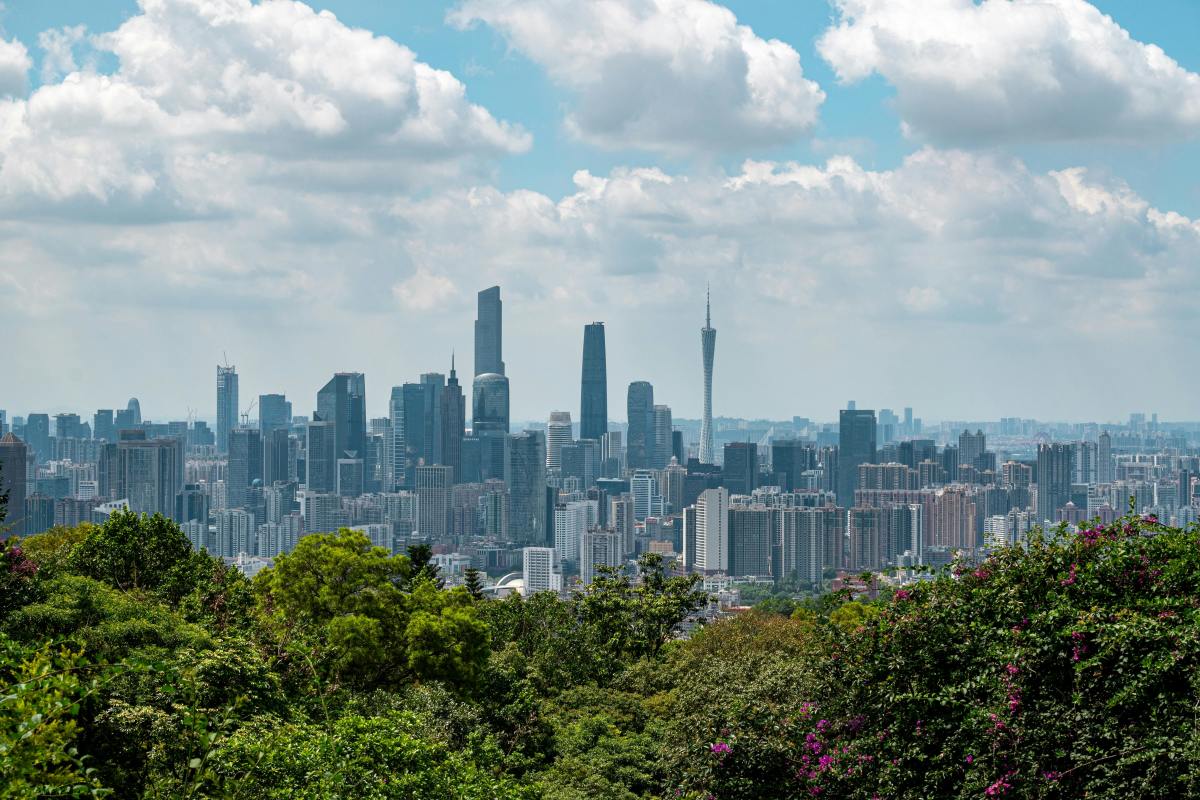H80 CG09Urban Mosaic
THE URBAN MOSAIC
INTRODUCTION:
Picking out patterns in your own city is, in some ways, a difficult matter. It is often hard to imagine why city functions is where they are, why people cluster where they do. Why does one block have high-income housing and another, slum tenements? And just when you think you are beginning to see some patterns in your city, you may also note that those patterns are swiftly changing. The house you grew up in is now part of the business district. The central city that you roamed as a child looks dead.
Chapter 3 focused on cities as points in geographic space. The point of this chapter is geographically quite different. We will try to orient ourselves within cities to gain some perspective on patterns within cities. In this chapter, we will study the city as if we were walking its street.
Our tour guide in this close-up view of the city will be the five familiar themes of cultural geography. Through culture area, we will examine spatial differences within cities. Cultural diffusion will show how these internal and regional differences develop. Cultural ecology will permit us to see the role of physical environment within the structure of the city.
URBAN CULTURE AREAS
Like society, the city is composed of many different groups. Consequently, the theme of culture areas can be applied to those parts of the city where people live who share similar traits-such as values, income, language, religion or race.
Looking at these urban culture areas, the cultural geographer seeks answer to such questions as: why do people of similar values cluster together? How can urban culture areas be defined?
SOCIAL and ETHNIC AREAS
To begin answering these questions, we should distinguish between social and ethnic urban culture areas. In a social area, people share such social traits as income, education, and stage of life. An ethnic area is shared by people of similar ethnic background, who share race or language.
One way to define social areas is to isolate one social trait and plot its distribution. The United States Census is a common source of such information because the districts used to count population, called census tracts. Census tracts with similar average incomes have been lumped together, showing areas of high, middle, and low income. Similar mapping could be done with other social traits taken from the census, such as age, education, or percentage of families below poverty level.
NEIGHBORHOODS
Social areas are not merely statistical definitions. They are also areas of shared values and attitudes, of interaction and communication. The concept of a neighbourhood is often used to describe small and social and ethnic areas where people with shared values and concerns interact on a daily basis.
People of similar values cluster together in neighborhoods to reduce social conflict. Any “deviants” will face such social coercion that they will probably choose to live elsewhere.
Most people seek areas where people like themselves live.
In short, a neighborhood is a place where a resident can feel at ease. This also reflects the fact that in urban, rather than suburban, neighbourhoods, much living and human interchange takes place in the streets and not at home.
ETHNIC NEIGHBORHOODS and GHETTOS
Distinct ethnic quarters have long been a part of urban history.
The heritage of these ethnic social areas, these “urban villages”, still plays an important role in urban affairs.
There is a great difference between a ghetto and a neighbourhood. The term ghetto has traditionally been used to describe an area within the city where a certain ethnic group has been forced to live. Used of the term today be reserved for areas of residential segregation where an ethnic group lives because it has very little choice in the matter-options are limited or non-existent. In other words a ghetto is an involuntary community.
A neighbourhood, on the other hand, is voluntary community where people reside by choice.
Whether an ethnic group lives in a ghetto or voluntarily forms its own neighbourhood usually depends on how discriminatory the majority society acts toward it.
SECTORS of an ETHNIC AREA
An ethnic area, although it may seem homogeneous to outsiders, is a diverse area. A typical ethnic area has four different sectors: the core, middle, fringe, and outlying cluster.
The core is the original area dominated by the ethnic group. The core is usually the port of entry for migrants new to city.
If core-area residents land a steady job, they may seek more permanent dwellings-a flat or a larger apartment in the middle zone with higher rents and more available space.
The fringe area is the transition between ghetto and neighbourhood. The nonethnic residents who surround the ghetto fear the group’s expansion and try to contain it by economic barriers. Because some of them live on the fringe out of choice rather than necessity, it probably can be called a neighbourhood instead of a ghetto.
In this case, outlying clusters take over the fringe’s role. Some group members, having achieved a degree of economic success, we want to remove themselves, literally and symbolically, from their ghetto past. Consequently, as the outlying cluster develops, it often becomes a desirable goal for those who are still trapped in the ghetto core.
This spatial pattern of ethnic areas can be thought of as a form of the immigrant’s ladder. That “ladder” is the classic American metaphor for the way new migrants supposedly enter society at the bottom and climb progressively higher and higher in status.
However, in more recent decades, the climbs up the ladder has been more difficult, partially because there has been less “push” from below since laws now restrict the number of immigrants who may enter the United States. The result has been ghetto frustration. A study that analyzed the geography of black riots in American cities during the 1960’s (Adams, 1972) found that most riots began in the middle zone rather than in the core or the fringe. Blacks who resided in the middle zone had experienced a small degree of improvement over their situation in the ghetto core. This group had held the highest hopes when the Civil Rights Acts 1964 became law, and this was the group that felt most deprived and disappointed when the promises of equal opportunity did not come true. Violence was their statement against the racist society that had blocked their aspirations.
In summary, ethnic social areas are not homogeneous. Rather like the city itself, they contain different levels of socioeconomic status. The ghetto is an involuntary community, and the ethnic neighbourhood is a voluntary one.
CULTURAL DIFFUSION in the CITY
Diffusion of people and businesses in the city can be divided into centralizing and decentralizing forces. These forces develop out of economic and social advantages. Accessibility and agglomeration also play roles in diffusion.
To understand the role of diffusion, let us divide the city into two major areas-the inner city and outer city. Those diffusion forces that results in residence, stores, and factories locating in the inner or central city are centralizing forces. Those that result in activities locating outside the central city are called decentralizing forces.
CENTRALIZATION
Examining the advantages of centralization can best be accomplished by breaking them into two categories: economic and social advantages.
Economic advantages. An important economic advantage to central-city location has always been accessibility. There, costumers from all parts of the city can gain access with equal ease. A central location is also important to those who must deliver their goods to costumers, because it provides equal transportation time and costs to all the costumers.
Location near regional transportation facilities is another aspect of accessibility.
Another major economic advantage of the inner city is agglomeration, or clustering, which results in mutual benefits for businesses. Historically offices have clustered together in the central city because of their need for communication. Clustering was essential for rapid communication.
Social advantages. Three social factors have traditionally reinforced central-city location: historical momentum, prestige, and the need to locate near work. The strength of historical momentum should not be underestimated. Many activities remain in the central city simply because they began their long ago.
The prestige associated with the downtown area is also a strong centralizing force. The “downtown lawyer” and the “uptown banker” are examples. Thus, as the middle class moved out to the “streetcar suburbs” on the edges of the city, the low-income workers increasingly dominated the inner city. Many inner-city areas became the ethnic neighbourhoods that were discussed.
DECENTRALIZATION
Decentralizing forces encourage relocation diffusion, such as the movement of a shop or residence from the downtown to the suburbs. Decentralizing forces also promote expansion diffusion, such as the location of a new shop in the suburbs. The forces behind decentralization fall into the same two general categories (economic and social) that were used to explain centralization.
Economic advantages. Changes in accessibility have been a major reason for decentralization. They must move away to minimize transportation costs. They relocate closer to a freeway system that only skirts the downtown area.
Although agglomeration once served as a centralizing force, its former benefits have now become liabilities in many downtown areas.
Social advantages. A number of social factors reinforce decentralization, such as loss of downtown prestige, sentiment attached to the suburbs, and new employment patterns.
The downtown area might once have lured people and businesses into the central city because it was a prestigious location. This may drive residents and commercial activities away.
Sentiment and prestige attached to the suburbs is a significant decentralizing force.
The need to be near one’s workplace has historically been a great centralizing force, but it can also be a very strong decentralizing force. At first the suburbs were “bedroom communities” from which people commuted to their jobs in the downtown area. Thus a typical journey to work involves lateral commuting-that is, travel from one suburb to another. As a result, most people who live away from the city center actually live closer to their workplace.
The costs of decentralization . As suburbs gained strength and old city centers began to decay, more and more city space was turned over to the movement, storage and servicing of automobiles. It has been estimated that 70 percent of the downtown area is devoted to the care and feeding of the auto.
In America, the automobile has been the main force behind urban sprawl. Because the private car is not tied to any particular route-way, urban diffusion can proceed into the suburbs along a broad “front”. In contrast, mass transit tends to produce “tentacles” of urban diffusion along its route-ways.
Many of the urban problems that we confront are products of the rapid decentralization North American cities have experienced since the beginning of the auto age. The declining downtown areas, inner-city ghettos, suburban sprawl, freeway congestion, and air pollution are all largely a product of decentralization.
WORKING IN THE SUBURBS
Along the poverty, wealth, crime, pollution, and fine restaurants, another landmark of urbanization has moved to the suburbs-jobs. The vast majority live and work in suburb. The forces of decentralization now push both large corporations and small service industries out of their traditional locations in central-city areas.
THE CULTURAL ECOLOGY OF THE CITY
The internal structure of the city can also be related to features of the physical environment. But the environment does not determine the character of the city; it merely offers possibilities. Different urban cultures evaluate environmental features differently.
The human impact on the physical environment also varies within the city. Meteorologists recognize that the central city is a heat island. It is usually warmer than surrounding areas because of the greater mass of concrete, bricks, and pavement which retain heat.
The urban dust dome refers to the greater pollution of the air in the cities. As the name implies, the pollution layer is thickest near the center of the city and becomes shallower toward the edges. The dust dome can extend 8000feet (2499meters) into the sky or even more. Typically, concentrations of particulate matter in the air are greater in industrials areas, decreasing toward the residential districts.
CULTURAL INTEGRATION and MODELS of the CITY
In our look at centralizing and decentralizing forces, we saw that many factors influence the location of an activity within the city. One method of seeking an answer is to create models that describe and simplify the relationships among the different social, economic, and geographic factors. The goal is to derive a model that describes the pattern of the city and explains how it evolved. Three of the most widely used models are described in this section.
Concentric Zone Model
The concentric zone model was developed in 1925 by Ernest W. Burgess, a sociologist at the University of Chicago.
There is a distinct pattern of income levels from the CBD (central business district) out to the commuter’s zone.
Zone 2, a transitional area between the CBD and residential Zone 3, was characterized by a mixed pattern of commercial and residential land use. Often this zone included slum and skid rows. Here also many ethnic ghettos began. The transitional zone in the city contains vacant and deteriorated buildings.
Zone 4 was a middle-class area of “better housing”.
Zone 5, the commuter’s zone, consisted of higher-income families together in older suburbs, either on the farthest extension of the trolley or on commuter railroad lines. From here, the rich pressed outward to avoid the increasing congestion and social heterogeneity brought to their area by an expansion of Zone 4.
Burgess’s concentric zone theory represented the American city in a new stage of development. Rich and poor, immigrant and native-born rubbed shoulders in the same neighbourhoods. The city was then rebuilt on a new concentric pattern that segregated classes. This segregated city started with a “core of poverty” and work its way out in what one scholar has called “rings of rising affluence”.
According to the concentric zone theory, this area should have been part of the zone of transition. Still other critics felt that Burgess, as a sociologist, overemphasized residential patterns and did not give proper credit to other land uses-such as industry, manufacturing and warehouses-in describing the urban mosaic.
Despite these criticisms, concentric zone theory was fairly accurate in describing the cities of 1925. In fact, many of the zones can still be seen in contemporary cities, particularly the zone of transition around the central business district. Usually it is still the area of skid rows and slums. Because these projects usually displace the transient population, they in effect expand the zone of transition. Skid rows like bumps under the carpet: They can be moved by sweeping the surface, but they never completely disappear.
There, the rich monopolize the city center, and the poor the outskirts, often in squatter’s settlements.
Sector Model
Homer Hoyt, an economist who studied housing data for 142 American cities, presented his sector model of urban land use in 1939.
Hoyt suggested that the high-rent sector would expand according to several factors. First, high-rent sector moves from its point of origin near the CBD, along established routes of travel, toward another nucleus of high-rent buildings. Second, a high-rent sector will progress toward high ground or along waterfronts, when these areas are not used for industry. Third, a high-rent sector will move along the route of fastest transportation. Fourth, a high-rent sector will move toward open space. Instead, the wealthy prefer to build new structures on vacant land where they can control the social environment. Thus, moving away from major routes of travel, rents go from high to low.
There are distinct patterns in today’s city that echo Hoyt’s model. According to Hoyt’s theory, they should be high rent. In the sense, they were imposed on an existing urban pattern. To minimize the costs of construction, they were built as often as possible through low rent areas, where the cost land purchase for the rights of way were less.
Multiple Nuclei Model
In 1945, two geographers, Chauncey Harris and Edward Ullman, suggested a new model, the multiple nuclei model. They maintained that a city developed with equal intensity around various points, or “multiple nuclei”. In other words, the city grew from a number of unrelated points, not from a single center.
Harris and Ullman rooted their model in four geographic principles. First of all, certain activities require highly specialized facilities. The second principle is that certain activities cluster together because they profit from mutual association. Third, certain activities repel each other and will not be found in the same area. Fourth, certain activities could not make a profit if they paid the high rent of the most desirable locations. They compromise and find an area of lower rents that still relatively accessible.
The concentric zone theory and sector theory are rather deterministic. They emphasize one single factor (residential differentiation in concentric zone theory or rent in sector theory) to explain the city. But the multiple nuclei theory encompasses the whole spectrum of economic and social possibilities.
URBAN LANDSCAPES
Urban areas, like all places occupied by humans, have cultural landscapes. These urban landscapes or townscapes , differ greatly both within cities and from one urban culture to another. Our perception of urban landscapes lends to focus on pathways, edges, nodes, districts and landmarks.
Street Plan
One major facet of any townscape is the street plan, or layout of routeways.
By contrast, most European, Asian, and African cities have very irregular street plans. Streets meet at odd angles with no apparent planning, and square and rectangular blocks are rare.
Types of Structures
Cities also differ greatly in the types of buildings they contain. Most buildings are new. The line between residential area and shopping district is blurred, because many proprietors live above their shops.
Perception of the Urban Landscape
A city consists of physical objects, such as streets, buildings, parks, and fountains. We call these objects, which exist in space, the landscape.
Our urban images result from a process of selection called “perception”. In other words, we base our decisions to a large extent on images created by our brain.
Differing images of the city As an example of how individually each of us perceives the city. Different perceptions result in different decisions.
This probably happens hundreds of times every day. In a city of a million inhabitants, there are millions different images
Measuring perceptions of the city During the last twenty years, social scientists have been concerned with measuring people’s perceptions of the urban landscape.
Kevin Lynch, an urban designer, pioneered a method for recording people’s images of the city.
On the basis of interviews conducted in Boston, Jersey City, and Los Angeles. Lynch (1960) suggested five important elements in mental maps of cities. (1) Pathways are the routes of frequent travel, such as streets, freeways, transit corridors. (2) Edges are boundaries between areas, or the outer limits of our image. (3) Nodes are strategic junction points, such as breaks in transportation, traffic circles, or any place where important pathways come together. (4) Districts are small areas with a common identity, such as ethnic areas and functional zones (for instance, the CBD or a row of car dealers). (5) Landmarks are reference points that stand out because of shape, height, color, or historic importance.
Using these concepts, Lynch saw that some parts of the cities were more legible than others. The less legible parts of the city do not offer such a precise landscape. People rarely images of places they haven’t been, and they don’t go into areas where they lack psychological reference points in the form of an urban image.
Geographers-as well as psychologists, anthropologists, sociologists, and urban planners-are constantly developing new ways to study the cities in the minds of urban dwellers.
CONCLUSION
The city expresses great variety. People and activities spread themselves across the city in an intricate urban mosaic. But we see that there is some order to this pattern. Using the concept of culture area, we can examine the social and ethnic areas of the city and note how people of similar values and background tend to cluster together.
We can also see that some forces work to centralize activities in the inner city, whereas other forces work to decentralize activities. We can outline various influences of culture and attempt to create a model of the city. A model helps us to clarify forces of development and describe the different areas of the city.
But not all patterns within the city are explained by economic or social theories. Each individual carries a unique image of the city around in his or her mind. This perception of the urban landscape acts as the basis for decisions. There are similarities between the images of people with similar experiences. But the images held by groups with different backgrounds and experience differ dramatically. So it is not enough to simply describe the city. We also need to know how it is perceived by different people.
RACHEL JOY G. VESTAL and OMAYYAH D. ADTHA
